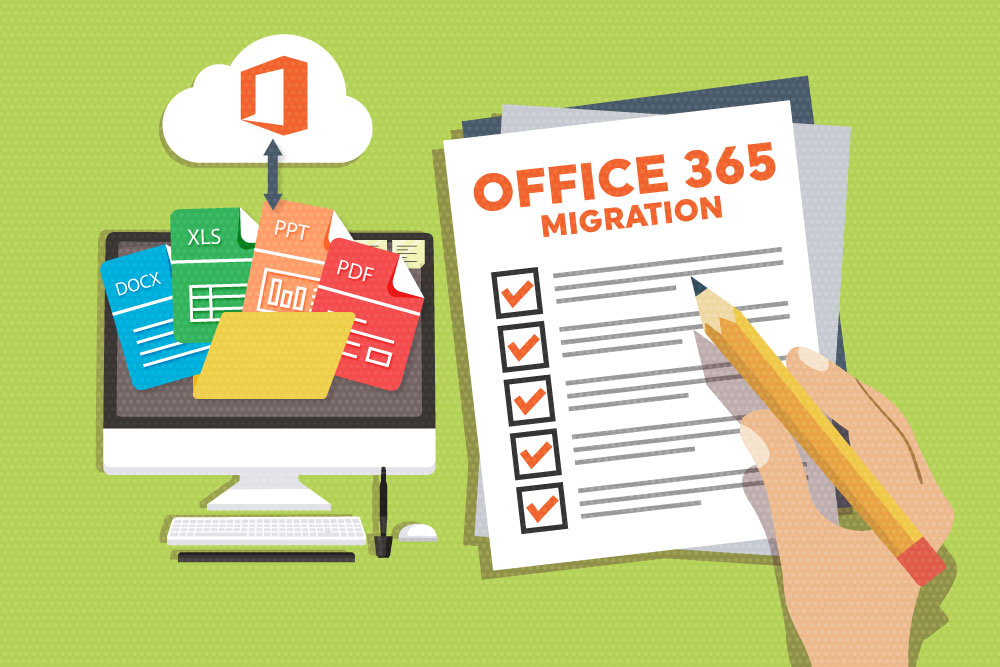
5 Steps For A Successful Office 365 Migration
Want to jump-start your business? Cloud technology has it all.
Moving to Office 365 for business has its benefits – a successful migration can boost productivity and cut down costs. It has better security, 24/7 IT Support, and a wide range of storage. But getting there? It’s not as simple as ABC.
While planning can be a humdrum day, a plan minimizes the risk of deployment and sets you up for migration success.
Here are some useful tips to make your a successful one.
Know Your Purpose
Start things on purpose. Don’t be like a ship without a rudder. On-the-spot decisions often lead to disaster. Define your needs and priorities. Don’t rush things – a thorough understanding of your business's mission and goals is a safe bet.
Below are some critical questions, you need to answer before migrating:
- What are the underlying ‘whys’ in your action?
- What are your goals and success criteria?
- If migration is a success, then what?
The above questions can help define your current business status. Evaluating and defining your needs is a good way to start achieving your expected migration outcome.
Consult the Experts
This stage is optional but highly recommended to SMEs (small & medium-sized enterprises).
On the off chance that you have an expert IT team, you might have the capacity to deal with the migration yourself. However, if you don’t have one, it’s smarter to hire a software consulting company – a .
The consulting company should provide you with all the things you need: planning and preparation, purchasing your licenses, performing the migration (without disrupting your business transactions), and providing Post Migration Support.
To save time, resources, labor force, and money. You must outsource to third-party professionals.
Plan Your Migration
After you’ve picked your licenses, the next stage is to plan your migration. Planning your migration, regardless of whether you work with a Partner or do it alone, is the most critical step. Without a plan, you will probably miss something. It’s considerably harder to settle something amidst migration than to invest additional time and effort to make a plan from the beginning.
EVALUATE YOUR CURRENT SYSTEM
Discover how your data/email is currently set up and the way the users access the services. Define what to improve and how office 365 can fix it. This will define what is the best to move your data; whether manually or by using an automated migration system.
CLEAN UNNECESSARY DATA
Amid the planning stage, you’ll have to audit and delete any information or old records that you don’t require. You’ll likewise need to delineate any new work processes, process changes, or consistency settings that will be utilized with Office 365.
COMMUNICATE WITH THE USERS
It is best to work out a strong communication plan to send out to all your users. It should include what the clients ought to expect in the weeks and days paving the way to the migration, what’s in the store the day of the migration, and after the migration is done.
Move It
Once you’re done with your plan and countermeasures, you can make the move.
The procedure will differ from company to company, depending upon what information you’re migrating over. However, this is what the usual migration process resembles:
- Set up new accounts.
- Transfer mail over to Office 365 accounts.
- Transfer any other data (like stored files being migrated over to SharePoint or OneDrive).
- Cut your MX records (your mail records) over to Office 365.
Your clients ought to have the capacity to sign in to their new Office 365 account on the next business day with all their old mail officially transferred.
Measure & Iterate
This stage is basic to understanding the real value and ROI of the IT project. This is the place success criteria, for example, worker notion or efficiency upgrades are characterized and estimated. This stage is likewise key for gathering success stories and overcoming adversity and deciding future objectives.
- Pre/Post Deployment Surveys
- User Satisfaction Surveys
- Success Metric Dashboard & Analysis
- Regular Success Metric Reviews
- Additional Labs
On-going actions are required to reengage this procedure again from the earliest starting point. Henceforth ongoing support beyond what Microsoft can offer is regularly a beneficial decision.
There are different steps in migration depending on your business. The more complex your business structure, the more steps should be taken. However, you can start with the basics.
Recent Posts
- How Does GPON Improve Network Efficiency?
- What Are The Advantages Of GPON?
- What Are The Benefits Of IT Outsourcing?
- What's The Deal With Ransomware Attacks?
- Are GPON Providers Widely Available?
- What's GPON's Impact On Bandwidth?
- Why Is Multi-Factor Authentication Important?
- How To Ensure Data Privacy Compliance?
 Blogs
Blogs Infographics
Infographics Videos
Videos Podcasts
Podcasts Case Studies
Case Studies Call For Quote
Call For Quote